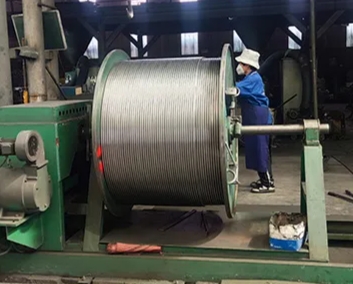
In the Steel Industry, cored wires are used to inject different alloying materials in the molten iron. It is a new way of controlling the materials added and ensuring operational safety. The production of cored-wire is not a simple task. There are several challenges to be faced. In the article that follows, we will discuss some of the main factors that may impact cored wire production.
AFFIVAL’s pure calcium-cored wire, a new product that is designed to improve performance during the steelmaking process. A cold-rolled outer strip of steel protects calcium metal in the core against oxidation. It is possible to get the metal core through slag, and into the lowermost layer of the steel if you combine these two layers. The metal calcium is reduced by burning and the rate of absorption into the steel is increased.
A wide variety of industries rely on pure calcium cored wire to perform various steelmaking tasks, including deoxidation and desulfurization. They are vital for producing steel of the highest quality. The calcium cored wire also helps to ensure that the steel is free of impurities, which improves its quality and durability. Global demand for the pure calcium wire core is set to increase rapidly in the coming few years.

Cored wires are metal rods that have a steel outer sheath, and an inner core made of materials such as silicon, alumina or calcium. Wire feeder machines are used to feed the wire into the liquid steel. The core and sheath are both melted in liquid steel. This allows the core and steel to interact. By using this process, calcium is added more consistently and in a controlled manner than by other methods.
A cored wire's biggest challenge is to maintain a consistent sheath temperature. It is important to maintain a stable sheath temperature, especially if the material used for the sheath has a tendency to corrode. A high sheath temperature can lead to cracks and other problems, which can reduce the life of the cored wire. In order to prevent this problem, manufacturers must keep the sheath temperature as close as possible to the liquid steel melting point.
In the production of cored-wire, another challenge is to ensure that the sheath can withstand pressure during injection. Sheaths that are too fragile can rupture during injection, resulting in calcium loss and lower absorption rates. By ensuring the sheath is constructed from a suitable material, it can be prevented. By addressing these issues, manufacturers can produce a high-quality cored wire that meets the needs of the industry.

Write a Message